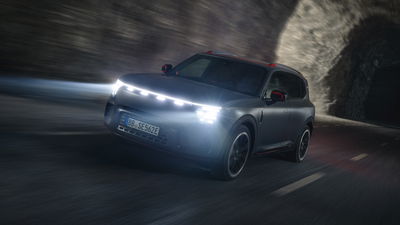3 'Murican Sport Sedans That Put The Germans in Their Place

I’m an American—born and raised near the Motor City—and I’ll admit that, when it comes to sport sedans, we haven’t exactly set the global standard.
Here’s the thing: it’s not for lack of ability or experience on the part of manufacturers. There’s a general misconception among people—even among Americans—that U.S. automakers just don’t “get it.” Trust me, they absolutely get it, but they will build whatever their customers want to buy, and until fairly recently in the States, buyers preferred their sedans to be soft, comfortable, isolated and well-suited for 3000-mile cross-country trips on straight highways. Spirited driving was always left to the domain of muscle cars or sporty coupes, not big, four-door family cars.

So whereas manufacturers tend to build cars based on the big picture—i.e. what their customers are actually buying—auto journalists tend to see things through a narrower view that, and I hate to say this, often focuses more on tiny details or mannerisms that most drivers will never notice - or worse, what’s trendy and new as opposed to what’s actually good. As a result, car enthusiasts and the motoring public are fed this skewed idea that American sedans are crap. Some are, but some are also brilliant.
That statement may have just booted me out of the secret auto journalist yearly gala and coffee event, but it needed to be said. The last few years have seen American sport sedans unquestionably matching and besting their German counterparts, and as such, the veil of misinformation is starting to lift. With that, I’m here to point out it’s not just a recent thing. Here are three examples from the last 15 years or so, along with some insight as to why I feel these cars have an edge over their offshore rivals.
2009 Cadillac CTS-V

Let’s forget for a moment that the 2009 CTS-V was originally $59,000—tens of thousands of dollars less than the BMW M5, Audi S6, and Mercedes E63 AMG of the same year. Let’s also forget the V’s exceptional suspension tuning, which at the very least makes it an equal to the almighty M5. Lastly, let’s forget the CTS-V makes 556bhp—far more than these competitors—while also using a proper six-speed manual transmission.
What you should remember here is the word depreciation, because it generally hits the German super sedans very, very hard in the United States. Currently all these six-year old sedans, in good condition with average miles, are worth around $30,000. That doesn’t sound bad, until you realise the BMW and Audi originally listed for $82,000. It’s even worse with the Merc, which stickered for a full $90,000 when new. By comparison, the depreciation alone on the E63 would buy a new CTS-V.
2002 Buick Regal GS

Stepping back a few more years and a lot less cash, we have the often underestimated, front-wheel drive Buick Regal GS. And I’m about to commit the unthinkable—compare it with a 2002 Audi S4, the final year for the infamous biturbo six. In what possible world could this comparison exist? Welcome to 2015, where these cars are only about $1500 apart in value—$4500 for the Buick and $6000 for the S4. They can both be entertaining in the corners but share a surprising fondness for understeer, they’re similar in size and horsepower, and both run engines of the forced-induction variety, and are popular cars for those who like to tweak boost pressures.
That said, the Regal is a good performer but the B5 S4 wins on every count—except for one: Cost-of-ownership. I can feel the S4 fans seething at me through the interwebz, but it’s the painful truth. Even the Audi enthusiast community knows how expensive and frustrating these cars can be to just keep running, never mind modify. Meanwhile, the relatively low-tech Regal keeps on chugging with basic maintenance, responds well to simple mods, and when something does go wrong, parts are cheap and easy to handle. The S4 is a blast to drive, but I‘d rather spend more time—and less money—in the fun-to-drive Regal.
2006 Dodge Charger SRT8

With the exception of the Pontiac Aztek, styling is purely a subjective topic and totally open to debate. That said, park a Plum Crazy 2006 Dodge Charger SRT8 in a parking lot next to a Granite Gray Metallic—no, make it Flint Gray Metallic; or actually, Pewter Metallic—2006 Mercedes-Benz E55 AMG and I’ll bet you a million dollars the Dodge gets way more attention. There’s nothing wrong with craving some admiration for your ride, and while I like the understated styling found on many German sport sedans, rocking something with a bit more personality—especially when you have the performance to back it up—can mean the difference between just owning a great car, and having a great ownership experience.
As with the previous cars, these two sport sedans actually have much in common. Despite the Merc’s $81,000 MSRP compared to $35,320 for the Dodge, both are worth around $16,500 on today’s market. Each V8 sedan turns the rear wheels, though the E55 does have 469bhp next to the Charger’s 425bhp Hemi. That doesn’t really matter though, because both cars are all but identical in performance, be it straight-line or curvy-line. Certainly the Merc is the more luxurious choice, but the Charger isn’t exactly lacking in creature comforts. Furthermore, the Charger delivers a bit more attitude to go with its Hemi power. And it’s available in a wonderful array of colours that aren’t just 50 shades of grey.














Comments
No comments found.